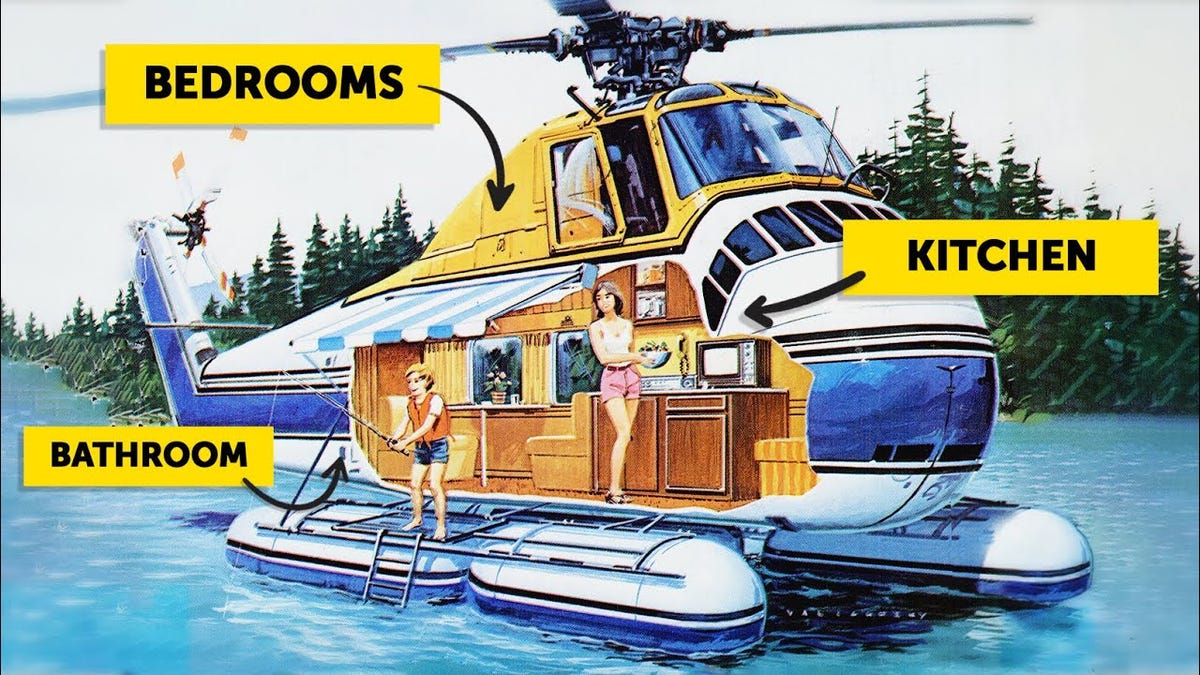Winnebago Once Tried to Sell a Flying RV Based on a Sikorsky Helicopter

Helihome: The Insane 1970’s Flying Camper
As a kid growing up in the ‘80s and ‘90s in the Pacific Northwest, I have a ton of memories of climbing into my grandparents’ Winnebago and setting off for some anonymous moss-covered, mosquito-filled hellscape nearly every weekend during the summer. As a result, I have mixed feelings about RVs, but I think if my grandparents had squired me about in the Winnebago Helihome instead of their terrestrial rig, those feelings wouldn’t be mixed at all.
01:01
Fix It or Ditch It?
Today 3:47PM
What’s a Winnebago Helihome, you ask? If you’re picturing a helicopter with brown stripes and a laminate-and-velour-covered interior, you’re right on the money, and wouldn’t you know, it was a real thing — kind of. If you’ve got questions, that’s understandable, so let YouTuber Calum explain it to you in his gentle Scottish brogue.
Of course, if you don’t have 16 minutes and 25 seconds to zone out and learn about recreational helicopters, I’ll break it down for you. Basically, the Winnebago Helihome started as a decommissioned Sikorsky S-55 helicopter (the U.S. military designation for this was H-19 “Chickasaw”) that was restored and upfitted by a company in Florida called Orlando Helicopter Airways. It was this company that initially designed and built a helicopter RV called the Heli-Camper, which caught the attention of RV giant Winnebago.
Winnebago loved the idea of a heli-RV so much, the company contracted Orlando Helicopter Airways to build a Winnebago-branded version called the Helihome. The Helihome featured many of the same interior features as contemporary ground-based recreational vehicles, like convertible seating, an electric stove and refrigerator, heating and air conditioning systems and even a bathroom with a chemical toilet and shower.
It probably won’t surprise you that, aside from the prototype unit commissioned by Winnebago, neither Winnie nor Orlando Helicopter Airways sold very many helicopter RVs. Part of that is surely down to the fact that most everyday folks don’t have a helicopter pilot’s license. Equally important, the Winnebago version started at around $300,000 in late-1970s money. That’s approximately $1.34 million in today’s money.
Despite not being a commercial success — and not kicking off the dawn of a new age of civilian aviation where every home had a whirlybird in the garage — the Helihome was an awesome idea that has continued to stoke the imaginations of aviation geeks for the better part of 50 years.



